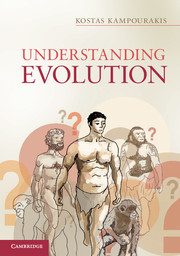Book contents
4 - Charles Darwin and the Origin of Species
A historical case study of conceptual change
Published online by Cambridge University Press: 05 June 2014
Summary
There is no question that many people have heard of Charles Darwin (Figure 4.1) and the Origin. Especially since the 2009 anniversary, when several Darwin events took place all over the world, one can reasonably assume that many people have heard something about him and his famous book. But how many people have actually read what Darwin wrote in the Origin? I am not very confident that all those people who have something to say about Darwin and his book (both proponents and opponents) have actually read it. But is it necessary to have read the Origin given the amount of information about evolution currently available? I think yes. The Origin was written by Darwin as an abstract of his species theory for a general audience. It is written with clarity, and it is full of insight and evidence for evolution that make it a fascinating read. Moreover, so many different and conflicting claims have been made about what he wrote in the Origin that the only way for anyone involved in any discussion about Darwin and evolution to be sure is to read what he actually wrote. What is also interesting, and sometimes difficult to realize, is the particular political, cultural, social, religious, and scientific contexts in which Darwin’s theory was developed and published. Darwin was not a prophet, nor did he ever intend to become the founder of a secular religion. He was a man of science; he developed his theory based on solid evidence, taking into account the best philosophical and scientific scholarship of his time. He was also anxious to convince his readers about natural selection as the mechanism of transmutation. And he did this based on scientific work and not on speculation; he even explicitly discussed the questions which he was unable to answer, the “difficulties” of his theory.
Information
- Type
- Chapter
- Information
- Understanding Evolution , pp. 98 - 126Publisher: Cambridge University PressPrint publication year: 2014
